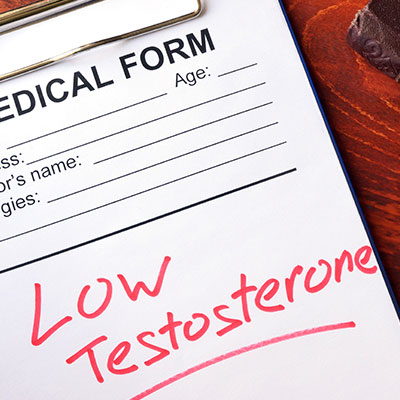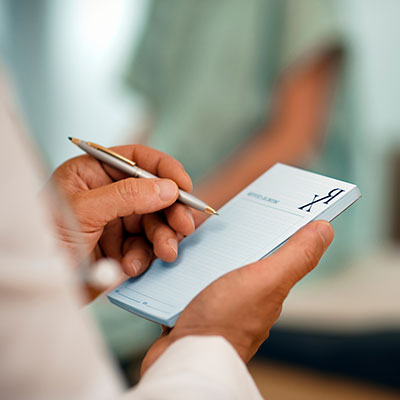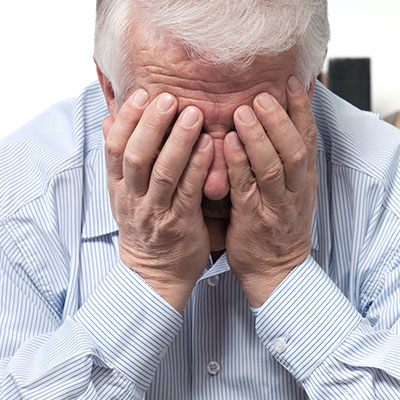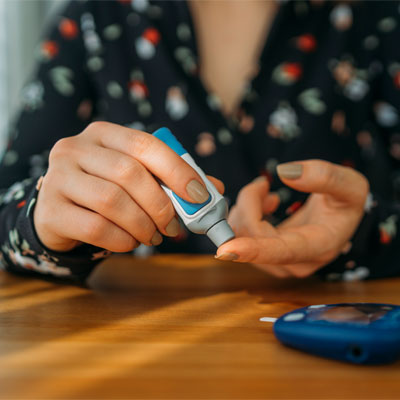Testosterone Deficiency Treatments in Adults
Contents
- What Causes Low Testosterone?
- Signs and Symptoms of Low Testosterone
- How Do I Know If I Have a Testosterone Deficiency?
- How Do I Find Out If I Have Low Testosterone?
- How Is Low Testosterone Treated?
- Who Shouldn’t Take Testosterone Replacement Therapy?
- Possible Side Effects of Testosterone Replacement Therapy
- Side Effects
- The Many Benefits of Testosterone Replacement Therapy
- How to Start Treatment for Low Testosterone
- How to Get a Testosterone Prescription

There can be a number of causes of testosterone deficiencies, such as injury to or disease of the testes or pituitary glands, certain cancers, or genetic conditions. Some medications can also lead to a testosterone deficiency, as can stress, obesity, or alcohol abuse.
However, the most common cause of a testosterone deficiency is simply the natural drop in testosterone levels as you age.
What Causes Low Testosterone?
There can be a number of causes of low testosterone or testosterone deficiencies, such as injury to or disease of the testes or pituitary glands, certain cancers, or genetic conditions. Some medications can also lead to a testosterone deficiency, as can stress, obesity, or alcohol abuse.
However, the most common cause of a testosterone deficiency is simply the natural drop in testosterone levels as you age.
A testosterone deficiency can be caused by an inherited (congenital) trait or something that happens later in life (acquired), such as an injury or an infection.
Several factors can contribute to an acquired testosterone deficiency. Not getting enough exercise, doing the wrong kinds of exercise, a poor diet, and metabolic conditions such as diabetes can lead to low testosterone. However, the most likely cause of testosterone deficiency is the normal drop in testosterone levels that occur as you age.
Testosterone deficiencies can be “primary” or “secondary.”
Primary Testosterone Deficiency
When you have a primary testosterone deficiency, that means that you don’t have enough testosterone due to a problem in the organs that make testosterone. In men, that is the testes, and in women, that is the ovaries or the adrenal glands. In a primary testosterone deficiency, the source of testosterone production in your body is still receiving the message from the brain to produce testosterone, but the organs are unable to produce the hormone.
Secondary Testosterone Deficiency
In a secondary testosterone deficiency, there is a problem in the areas of the brain that signal the sex organs to make or release testosterone. This type of testosterone deficiency means that you have a problem in the hypothalamus or the pituitary gland — the parts of the brain that tell the testicles to produce testosterone. The hypothalamus produces gonadotropin-releasing hormone, which signals the pituitary gland to make follicle-stimulating hormone (FSH) and luteinizing hormone (LH). Luteinizing hormone then signals the testes to produce testosterone.
Signs and Symptoms of Low Testosterone

Generally, testosterone deficiency impacts three major areas of your life: your physical wellbeing, your emotional wellbeing, and your mental acuity. Broadly, the signs and symptoms of testosterone deficiency are a decreased sex drive, fatigue, weight gain, loss of muscle and bone mass, and changes in mood.
Some of the most common signs and symptoms of testosterone deficiency and why they occur include:
Erectile Dysfunction (men)
Testosterone is a precursor to the release of nitric oxide during sexual arousal, which starts several reactions that result in an erection.
Hair Loss
Men and women experience hair loss as they age. Often this is the result of age-related testosterone decline.
Reduced Bone Density
Testosterone helps to produce bone tissue and maintain bone mass and density.
Sleep Problems
Patients with low testosterone report difficulties in falling asleep or staying asleep. This could be because low T can lead to obesity, which can lead to sleep apnea.
Lowered Libido
Both men and women with testosterone deficiency experience a decrease in sex drive.
Loss of Lean Muscle
Testosterone plays a role in the development of muscle mass. Testosterone deficiency often results in significant loss of muscle mass.
Hot Flashes and Night Sweats (women)
We used to think that loss of estrogen was responsible for the hot flashes and night sweats experienced by menopausal women. We now know that hot flashes, and many of the debilitating symptoms of menopause, are more likely caused by testosterone deficiency in women.
Some of the other more common symptoms of testosterone deficiency include:
- Decreased energy
- Weight gain
- Changes in mood
- Depression and anxiety
- Memory loss and other cognitive difficulties
Some of the less common signs and symptoms of testosterone deficiency in men and women include:
- Reduced testicle size (men)
- Reduced semen volume (men)
- Reduced or lack of beard growth (men)
- Increased “bad” cholesterol levels
- Loss of red blood cells (anemia)
How Do I Know If I Have a Testosterone Deficiency?
There are several signs and symptoms that can be associated with a testosterone deficiency in men and women:
- Reduced libido
- Difficulty obtaining or maintaining an erection (men)
- Vaginal dryness, or painful intercourse (women)
- Low sperm counts/fertility issues (men)
- Worsening of menopausal symptoms (women)
- Loss of focus and concentration
- Mood swings and anxiety
- Inability to build muscle, even while exercising
- Increase in body fat
- Memory loss and other cognitive difficulties
- Loss of lean body (muscle) mass
- Loss of bone density
Besides the signs and symptoms above, testosterone deficiencies can cause other negative effects on your health and wellbeing, such as:
- Increased risk of cardiovascular disease
- Increased risk of death from a cardiovascular event
- Increased risk of metabolic syndrome: high blood pressure, elevated insulin levels, excess belly fat, and abnormal cholesterol levels
- Strong association with diabetes
- Strong association with atherosclerotic disease of the aorta
- Higher incidence of prostate cancer
- Association with more aggressive variants of cancer
How Do I Find Out If I Have Low Testosterone?
Regardless of how many of the signs and symptoms of low testosterone you may be exhibiting, the only way to determine if you have a testosterone deficiency is to have your testosterone levels tested. This is usually done with a simple blood test. In addition to having your testosterone level tested, your doctors will take a complete medical history and do a thorough medical exam before offering a diagnosis of low testosterone.
Any doctor can perform a blood test for low testosterone. However, if you suspect that you have a testosterone deficiency, it is best to be tested by a doctor who specializes in age-related hormone imbalances in men and women.
How Is Low Testosterone Treated?

Testosterone therapy is only available with a doctor’s prescription. Your doctor will prescribe testosterone replacement after your testosterone levels have been tested. If your levels are low enough to be diagnosed with a testosterone deficiency, you will be prescribed testosterone replacement therapy.
Our doctors have found that testosterone injections are the safest and most effective form of testosterone therapy. You cannot buy testosterone injections online or without a doctor’s prescription.
Who Shouldn’t Take Testosterone Replacement Therapy?
Testosterone replacement therapy is FDA approved for the treatment of low testosterone in men and women. Still, like any prescription medication, there are some indications and warnings about who shouldn’t take testosterone replacement therapy.
Interactions
According to the Prescribing Information for most testosterone products, testosterone should not be used:
- In patients with a known hypersensitivity or allergy to the drug
- In patients with a history of cardiovascular disease
- In males with carcinoma of the breast
- In males with known or suspected carcinoma of the prostate gland
- In women who are pregnant or may become pregnant
- In patients with serious hepatic (liver) or renal (kidney) disease
Warnings
Before accepting a prescription for testosterone replacement therapy, tell your doctor if:
- You have an allergy to testosterone or any other part of testosterone enanthate injection.
- You are male and have breast or prostate cancer.
- You have any of these health problems: heart disease, kidney disease, or liver disease.
- You are pregnant or may be pregnant. Do not take testosterone enanthate injection if you are pregnant.
- You are breastfeeding. Do not breastfeed while you take testosterone enanthate injection.
- Women should be observed for signs of virilization (deepening of the voice, hirsutism, acne, clitoromegaly, and menstrual irregularities)
In addition, tell your healthcare provider about any medicines you are taking, including prescription and over-the-counter medicines, vitamins, and herbal supplements. Testosterone affects how other medicines work, and other medicines may affect how testosterone works.
Possible Side Effects of Testosterone Replacement Therapy
When properly prescribed for the treatment of low testosterone, testosterone replacement therapy is generally regarded as safe. However, as with any drug or prescription medication, there are some possible or potential side effects of testosterone.
Side Effects
More common – Some of the more common side effects of Testosterone Enanthate include:
- Nausea
- Vomiting
- Headache
- Skin color changes
- Oily skin
- Hair loss
- Acne may occur
- Pain and/or swelling at the injection site
Less common – Some of the potentially severe, though less common side effects of Testosterone Enanthate may include:
- Trouble sleeping/snoring
- Signs of serious liver disease (such as persistent abdominal pain/nausea, unusual tiredness, yellowing eyes/skin, dark urine)
- Hands/ankles/feet swelling
- Breasts swelling (in men)
- Unusual tiredness
- Fast/irregular heartbeat
- Shortness of breath/rapid breathing
- Unusual sweating
- Confusion, sudden dizziness/fainting
- Sudden vision changes
- Mood swings particularly increased anger, aggression, or anxiety
See your medication’s insert or the Prescribing Information for a complete list of potential side effects.
Your prescription for testosterone replacement will be tailored to best meet your particular goals and lifestyle. You will be carefully monitored over the course of your program of testosterone replacement, so any chance of side effects should be kept to a minimum. Tell your doctor if you are experiencing any of these or other side effects while taking testosterone.
Normally, if you experience any side effects while on testosterone replacement, chances are they will be mild and easily mitigated by simply changing your dosage, brand, or type of testosterone therapy.
The Many Benefits of Testosterone Replacement Therapy

One of the first improvements our patients of testosterone therapy notice is an increase in sex drive and improvement in sexual performance. Besides improving your love life, some of the other benefits of testosterone therapy include:
- An increased ability to build lean muscle and increased muscle mass – This is often also accompanied by fat loss because testosterone not only improves your ability to burn fat but, as you build more muscle mass, your metabolism heats up even further.
- Increased energy levels – Testosterone therapy improves your cell’s ability to turn calories into energy.
- Improved moods and cognition – Testosterone therapy also can help to return men and women to a more even emotional keel and can also fight depression, anxiety, and other mood swings. Testosterone therapy can also help to improve memory, focus, and your ability to complete complex cognitive tasks.
How to Start Treatment for Low Testosterone
In order to start treatment for low testosterone, you first need to obtain a doctor’s prescription for testosterone replacement therapy. That will start with taking a medical history and then having a complete medical exam to rule out any other cause for your symptoms of low testosterone.
How to Get a Testosterone Prescription
You can only receive testosterone deficiency treatment with a doctor’s prescription. If you qualify, you can get a prescription for testosterone treatment by following these five easy steps:
- Step 1 – Fill out an online medical history form – This first step is the only step in the process of getting a prescription for testosterone injections that can be done online. You cannot legally BUY testosterone injections online or anywhere else without a prescription.
- Step 2 – See a doctor –If your online medical history form indicates that you are a good candidate for testosterone deficiency treatment, the next step is to see your doctor. He or she will discuss your medical history and conduct a complete physical exam.
- Step 3 – Laboratory hormone testing – Once you have completed your physical exam, if your doctor suspects you may have low testosterone, you will be referred to a laboratory to have the testosterone levels in your blood tested.
- Step 4 – You will obtain a prescription for testosterone treatment – If the results of your laboratory tests indicate that your testosterone levels are below normal, your doctor will prescribe a brand and dosage of testosterone injections that best suits your needs and lifestyle.
- Step 5 – Your testosterone treatments will be delivered to you – Your prescription for testosterone therapy will be forwarded to one of the pharmacies we work with that specialize in filling prescriptions for testosterone injections. The pharmacy, in turn, will deliver your testosterone treatment supplies right to your home!
Now that you know a little bit more about the vital role that testosterone plays in men and women and how to recognize the signs and symptoms of testosterone deficiency, why not contact us today and learn more about the many life-changing benefits of testosterone therapy.



